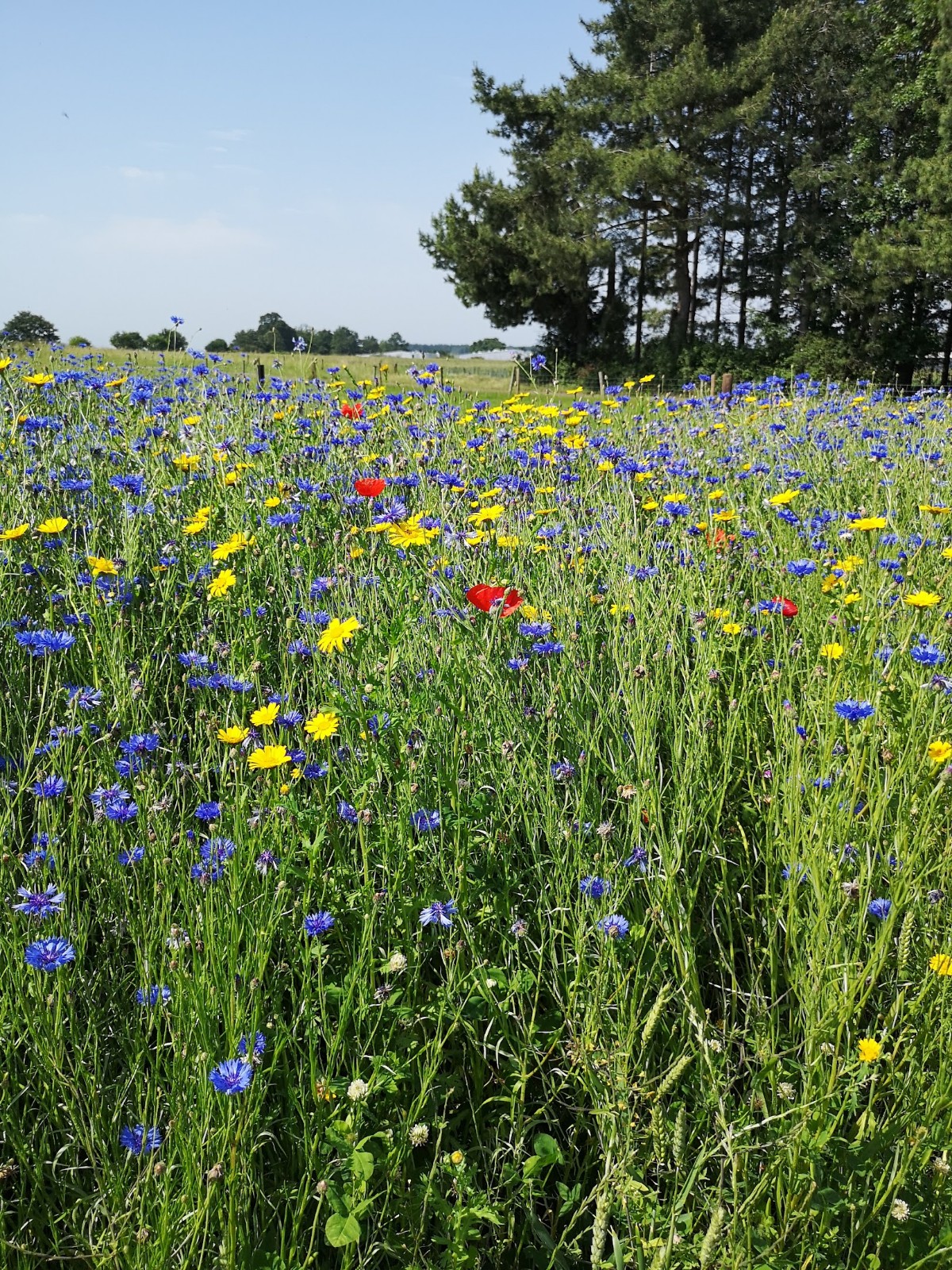

This spring or autumn sown mixture is a fast growing collection of vivid colours including eye catching reds, piercing blues and sunny yellows.The Cornfield annual mix work well on most soil types and unlike many perennial wild flower meadow mixtures, does well on fertile soils.
When to Sow: The annuals should be sown from March to May in the spring and September to early October in the autumn, ensure Poppy especially is autumn sown for a more reliable germination.
An autumn sowing will produce earlier flowering plants in the spring season, producing a mass of flowers in late May and June with corn cockle, cornflower and poppy most abundant. A spring sowing favours the bright yellow corn marigold and leads to a later flowering period from Mid July onwards.
Sowing Rates: Sow at a rate of around 1.5-2.5 grams per m2 (6-10kgs per acre).
Preparation: For best results sow into a clean, weed free seedbed, it is important to stress that the seedbed needs to be free from weeds as once the wildflower mixture is down it is difficult to control weeds if they come through. Cultivate the ground to create a fine, firm and level tilth.
Sowing: Broadcast the seed evenly by hand or with a spinner across the soil surface, consider mixing with dry, sharp sand to help bulk out the seed and achieve an even sowing cover. Finish the sowing by lightly raking or harrowing to cover the seed and then treading or rolling to consolidate the area to ensure the seeds are in good contact with the soil. The seeds are very small, it is important to note that they do not need to go in at any depth, sowing any deeper than 1cm could result in a patchy take of the mixture.
Managing Cornfield Annuals: No management is required between sowing and flowering except perhaps taking the opportunity to control sporadic weeds. Be very careful if the area does require weeding that you don’t pull up any of the wildflowers! In the beginning it can be difficult to differentiate between wildflower and weed!
Once the cornfield annuals have finished flowering they will die away in late autumn as the weather gets colder, now is the time to cut them down with a flail ir strimmer. After flowering the plants may well set seed in late summer and early autumn, while these seeds will be viable if they drop to the ground, expecting a similarly vivid show in year two on the same site from the original sowing can be risky. Lightly disturbing the ground in Feb/March can stimulate a flush of new seedlings from the dropped seeds, but re-seeding from scratch will give a more reliable and consistent showing.
Cornfield Annuals Species Information
Corn Cockle: Has a lovely bright pink flower, which adds even more colour to a cornfield annual meadow. This is one of taller annuals reaching heights of 1 metre. The seed viability on corn cockle is short lived so planting late into winter should be avoided. It will grow on the majority of soils across the UK, it does seem to favour most of all the free draining, sandy loam soils. Flowers: June - August.
Cornflower: they have a good frost tolerance as seedlings so can be planted either in the autumn or spring. The height cornflowers will grow can vary, we find it is usually between 20-90cm. Like the other annuals cornflower will provide a rich source of nectar for bees and other pollinators, with its vivid blue flower attracting them. Flowers: June - August.
Corn Marigold: It can be sown either in the autumn or spring, mid-April would generally be the cut off point for sowing. Corn marigold will grow on the majority of soil types, it does favour light to moderately acidic soils. The cheerful yellow flowers of corn marigold can be seen as early as May and can last through until September.
Field Poppy: one annual that will benefit from an Autumn sowing. They require a period of chilling to break dormancy, so you will often find from an autumn sowing you see more poppies come the summer months when they flower. Poppy seeds can sit dormant for many years, if the ground is disturbed this will usually result in a colourful poppy display. Heights will vary with poppies, usually they will be between 20-60cm. Flowers: June-August.
Crimson Clover: Takes about 3-4 months to flower from sowing. The flower head is a rich crimson to red colour and shaped like a cone.
Persian Clover: Will flower after about 2-3 months from sowing, The flowers are notably fragrant, and pink, purple to mauve in colour.
Birdsfoot Trefoil: The inclusion of the characteristic ‘eggs & bacon’ plant fills up the base of the mix and keeps weeds at bay, as well as providing late summer yellow and red blooms.
Date Posted: 25th November 2021



